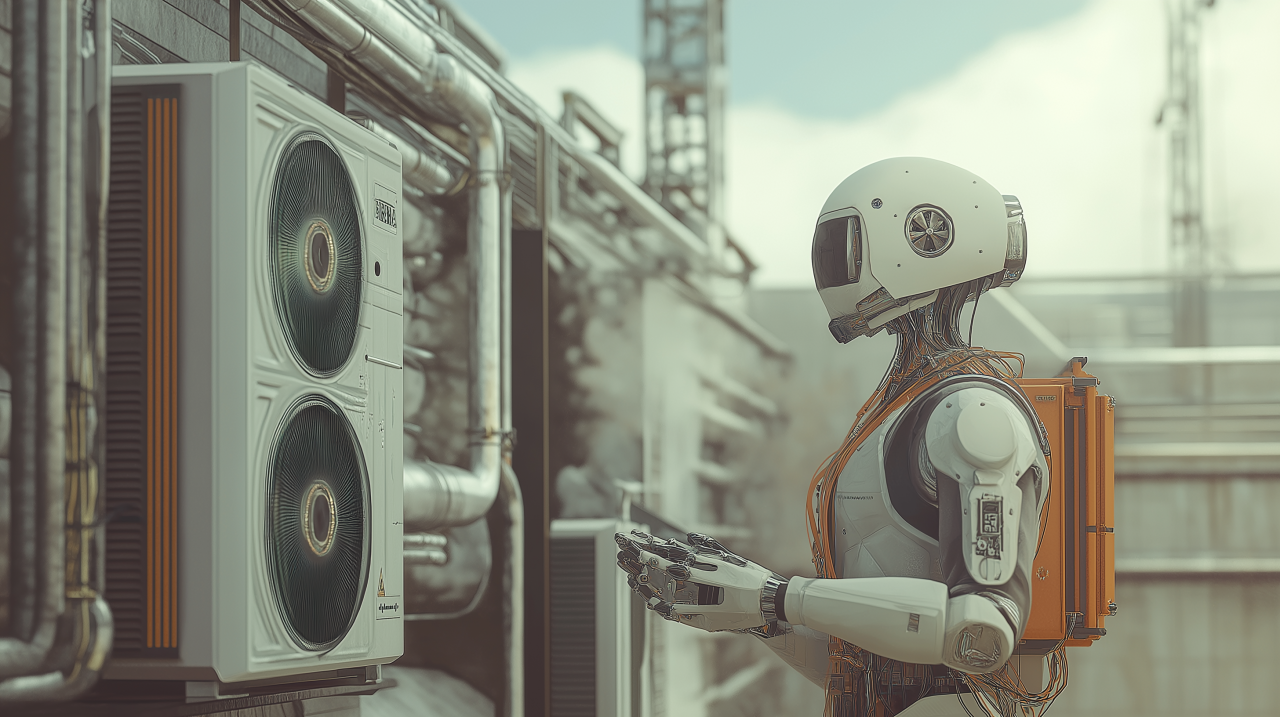As technology continues to advance, the integration of AI in various industries is becoming increasingly prevalent. One area where this integration is making a significant impact is in the field of HVAC (Heating, Ventilation, and Air Conditioning). Specifically, the use of AI-enhanced fault isolation in HVAC systems is revolutionizing how these systems operate, improving efficiency and reliability. This article will delve into the intricacies of this technology, exploring its benefits, applications, and future potential.

The Importance of Fault Isolation in HVAC Systems
Fault isolation is a critical component of any HVAC system. It involves identifying and isolating faults to prevent them from affecting the entire system. Traditional fault isolation methods can be time-consuming and often require significant manual intervention. However, with the advent of AI technology, the process has become much more efficient and accurate.
How AI Transforms Fault Isolation
AI technology allows for real-time monitoring and analysis of HVAC systems. This means that faults can be detected and isolated as soon as they occur, minimizing downtime and reducing the risk of further damage. By analyzing data from various sensors, AI algorithms can identify patterns and anomalies that may indicate a fault, allowing for proactive maintenance and repair.
Benefits of AI-Enhanced Fault Isolation
Improved Efficiency
One of the primary benefits of AI-enhanced fault isolation is improved system efficiency. By quickly identifying and isolating faults, AI helps to ensure that HVAC systems continue to operate at peak performance. This not only reduces energy consumption but also extends the lifespan of the system.
Cost Savings
The ability to detect and repair faults quickly can result in significant cost savings for businesses. By preventing extensive damage to HVAC systems, companies can avoid costly repairs and replacements. Additionally, the increased efficiency of the system can lead to lower energy bills.
Enhanced Reliability
With AI-enhanced fault isolation, HVAC systems become more reliable. The ability to continuously monitor and analyze system performance means that potential issues can be addressed before they cause major disruptions. This leads to fewer breakdowns and more consistent system operation.
Applications of AI in HVAC Systems
Predictive Maintenance
AI technology is being used to predict when maintenance is required for HVAC systems. By analyzing data on system performance, AI algorithms can determine when components are likely to fail, allowing for maintenance to be scheduled before a breakdown occurs. This proactive approach helps to reduce downtime and extend the life of the system. Learn more about this in our article on Predicting HVAC Breakdowns.
Energy Management
AI-enhanced fault isolation is also being used to improve energy management in HVAC systems. By continuously monitoring system performance, AI can identify areas where energy is being wasted and make adjustments to optimize efficiency. This can result in significant energy savings and reduced environmental impact. For more insights, check out our piece on HVAC System Optimization.
Indoor Air Quality Monitoring
Another application of AI in HVAC systems is indoor air quality monitoring. By analyzing data from sensors, AI can detect pollutants and allergens in the air and adjust the system to improve air quality. This is particularly important in commercial and industrial settings where air quality can have a significant impact on health and productivity. More information is available in our article on AI for Indoor Air Quality Monitoring.
The Future of AI-Enhanced Fault Isolation in HVAC
Continued Advancements
The future of AI-enhanced fault isolation in HVAC systems is promising. As AI technology continues to advance, we can expect to see even greater improvements in system efficiency and reliability. New algorithms and machine learning techniques will enable even more accurate fault detection and isolation, further reducing downtime and maintenance costs.
Integration with Smart Building Technology
As buildings become smarter, the integration of AI-enhanced fault isolation with other smart building technologies will become increasingly important. By working together, these technologies can create more efficient and sustainable buildings, reducing energy consumption and improving occupant comfort. Discover more about how AI is transforming the HVAC industry in this external article.
Conclusion
In conclusion, AI-enhanced fault isolation in HVAC systems is a game-changer for the industry. By improving efficiency, reducing costs, and enhancing reliability, AI is helping to create more sustainable and comfortable environments. As technology continues to advance, the potential for AI in HVAC systems is limitless, and the future looks bright.

Frequently Asked Questions
What is AI-enhanced fault isolation in HVAC?
AI-enhanced fault isolation in HVAC systems involves using AI technology to detect and isolate faults in real-time, improving system efficiency and reliability.
How does AI improve HVAC system efficiency?
By continuously monitoring and analyzing system performance, AI can identify and address inefficiencies, optimizing energy use and reducing waste.
What are the benefits of AI-enhanced fault isolation?
The benefits of AI-enhanced fault isolation include improved efficiency, cost savings, and enhanced reliability, leading to more sustainable and comfortable environments.
This article contains affiliate links. We may earn a commission at no extra cost to you.
